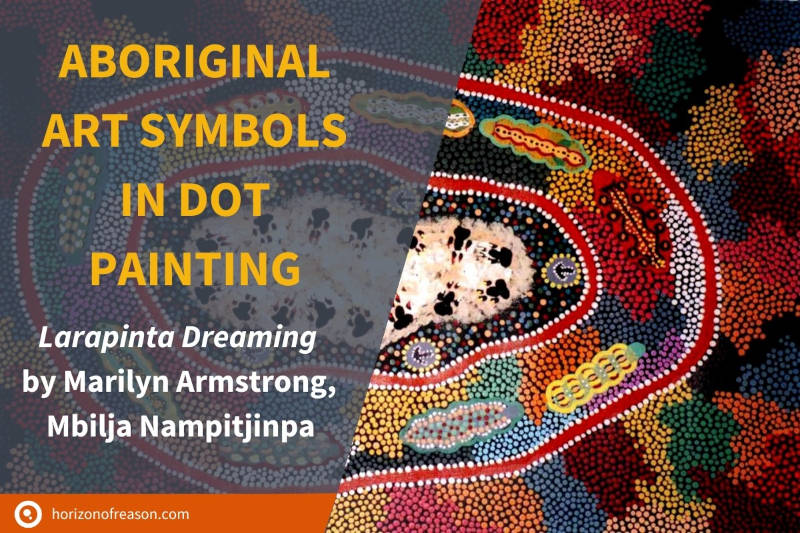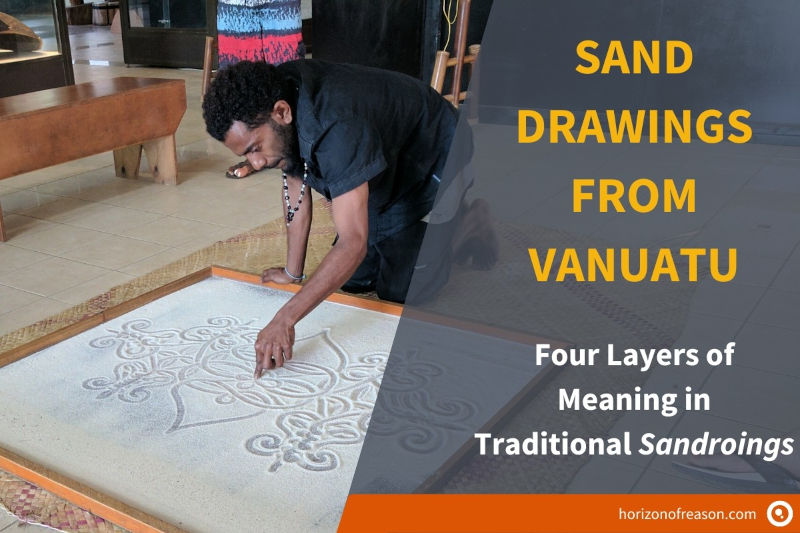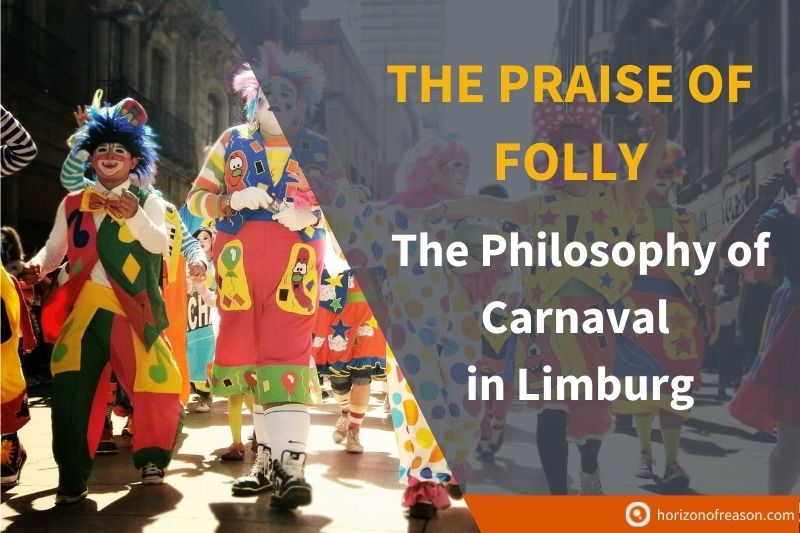
The Meaning of Aboriginal Art: Namarrgon by Joshua Bangarr

Peter Prevos |
1015 words | 5 minutes
Share this content
The descendants of the original inhabitants of Australia have a unique culture passed on through storytelling, ceremonies and their art. Their paintings have become famous around the world during the last decades. The iconic dot-paintings of the central desert and the line drawings of Arnhem Land are the two most common styles. An earlier article describes the symbolism of Aboriginal dot-paintings. This article analyses the four levels of meaning of Aboriginal art using a painting I bought near Darwin.
Traditional Art of Northern Australia
A few years ago, I visited Darwin and the World Heritage-listed Kakadu national park in the tropical North of Australia. On the way back from Kakadu, we stopped at the Didgeridoo Hut, in the quaintly named town of Humpty Doo. On this occasion, I purchased a wonderful work with the title Namarrgon by Arnhem Land artist Joshua Bangarr.
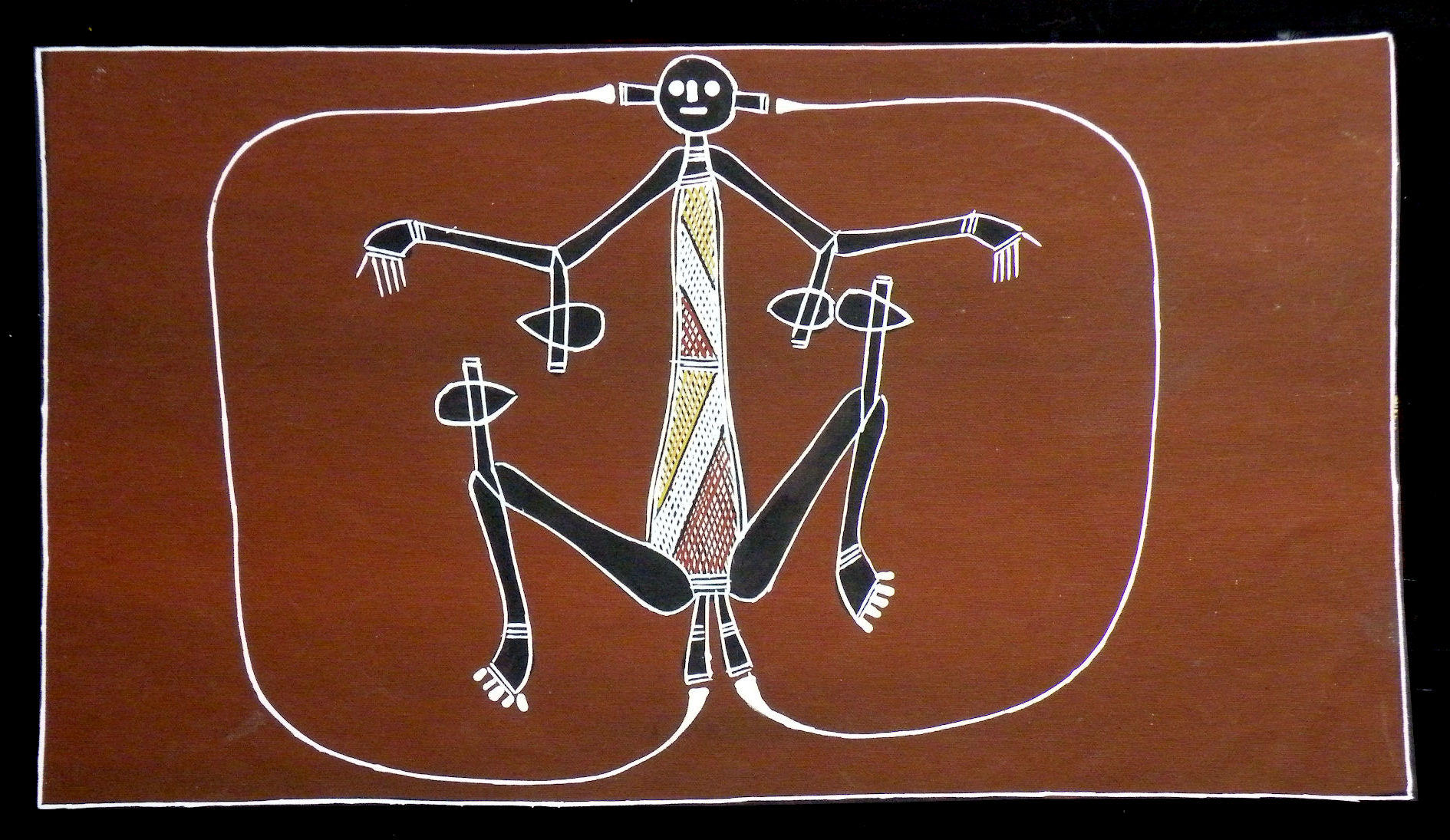
Layers of Meaning of Aboriginal art
When I was ready to pay for the work of art, the person at the counter said: "This is not art". She explained the cultural significance of this picture. However, to say that this work is not art because the painting has a deeper meaning is a confusing comment. I was tired from a long trip and did not want to argue the point, so I will do it in this article.
The salesperson's comment is somewhat confusing. What he tried to say is that this painting is not l' art pour l' art. There is, however, no such thing as art without meaning. Art divorced from any didactic, moral or utilitarian function is not art, but decoration.
There is a difference in meaning between Aboriginal art and works from the university-educated establishment. In Aboriginal art, the cultural framework of the artist is the source of meaning. In contemporary European art, the individual artist imbues the work with meaning. While the current art ideals in Western or European cultures celebrate the individual artist, indigenous works find inspiration in tradition.
Level 1: The physical work
On the first level, all we see is the physical form of the painting. This is the level that we can see without looking at what the painting depicts. At this level, there is no real meaning of the aboriginal art, just materials, lines, surfaces, colours and composition.
Traditional art from northern Australia has a distinctive style. Artists use thin lines and hatching patterns. The hatchings communicate the clan, kinship (skin) and country of the artist. Not only the design but also the thickness of the lines express who owns this design. The composition of most works in this genre are straight forward two-dimensional representations, such as is the case in this work.
Although Bangarr used modern acrylic paint, the painting only has four traditional ochre colours: red, yellow, white and black. The artists used the stem of a freshwater reed instead of a modern brush.
We are literally just scratching the surface of this art, so let's move to the next level.
Level 2: The story
The second level of meaning in this work of aboriginal art is the mythological level. All traditional indigenous art has a connection with mythology. More broadly, this level of meaning of any artwork is the story it depicts.
The Namarrgon canvas depicts the mythological figure of the lightning spirit. Ancient depictions of Namarrgon can be found on many rock escarpments around Kakadu and Arnhem Land. The Anbangbang gallery in Nourlangie houses some impressive examples of Australian rock art. The image below is a traditional rock painting of Namarrgon in the Kakadu national park.
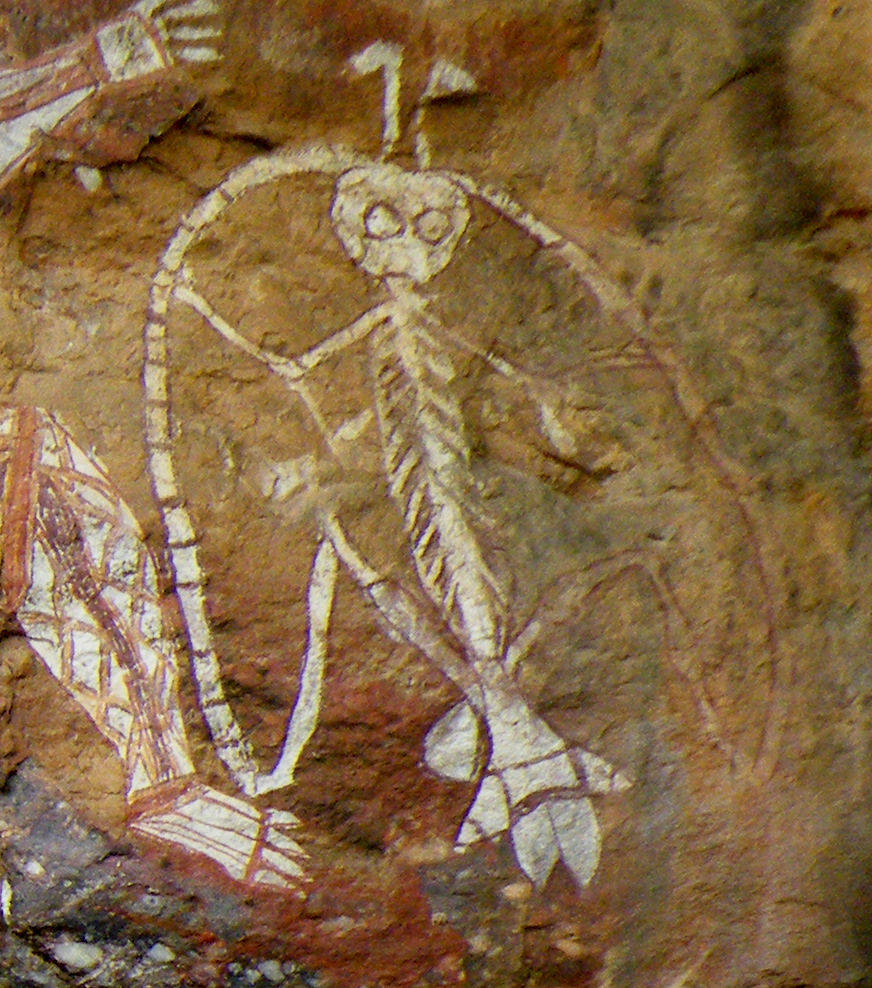
In the mythology of the Kunwinjjku people, Namarrgon is responsible for the spectacular thunderstorms at the start of the wet season. He has lightning rods emanating from his head through to his genitals. Stone hammers hang from his elbows and knees, which he uses to create thunder, akin to the Norse god Thor.
Namarrgon's body shape represents the Leichhhardt grasshoppers, which are the mythological children of Namarrgon. The colours used in this work are also symbolic. Yellow symbolises the sun, red the blood of the earth and white is the colour of body paintings for ceremonies. The colour black has secret meanings that are unknown to me.
At this level, the mythology is just a story you would tell children. Many people confuse mythology with stories that are not true. However, mythology has a deeper meaning that goes beyond the literal truth of the words. This is the third level of meaning in aboriginal art.
Level 3: Mythology
As we move to the third level of meaning, less is known publicly about these paintings. In Aboriginal art, the sacred is closely related to the secret. I have not been initiated in the culture of the people that own these stories, so I cannot divulge this level of meaning.
Dreaming stories are on the surface simple mythological stories of ancestral beings. Still, on a deeper level, they provide clues about the landscape, the seasonal availability of food, and other practical hints to survive in the often harsh Australian climate.
The story in this painting has links to the Leichhardt grasshopper. The appearance of this grasshopper signals that the time of thunderstorms is about to arrive and that they need to seek shelter from the damaging lightning strikes. This image thus plays an educational role that teaches people about the seasons.
Level 4: Deeper meaning in Aboriginal art
At the deepest, fourth level of meaning, the dreaming stories depicted in the art contain metaphysical truths. Only the older generation of the people that maintain this dreaming know these truths. Uninitiated balanda (white people) can only guess at the more profound meaning.
A friend suggested that the fact that the head and genitals of Namarrgon are connected is a lesson about male psychology. While this seems certainly plausible, Joshua Bangarr did not provide any clues on the meaning of this painting. This deep secrecy is what is so fascinating about Aboriginal art.
Share this content
